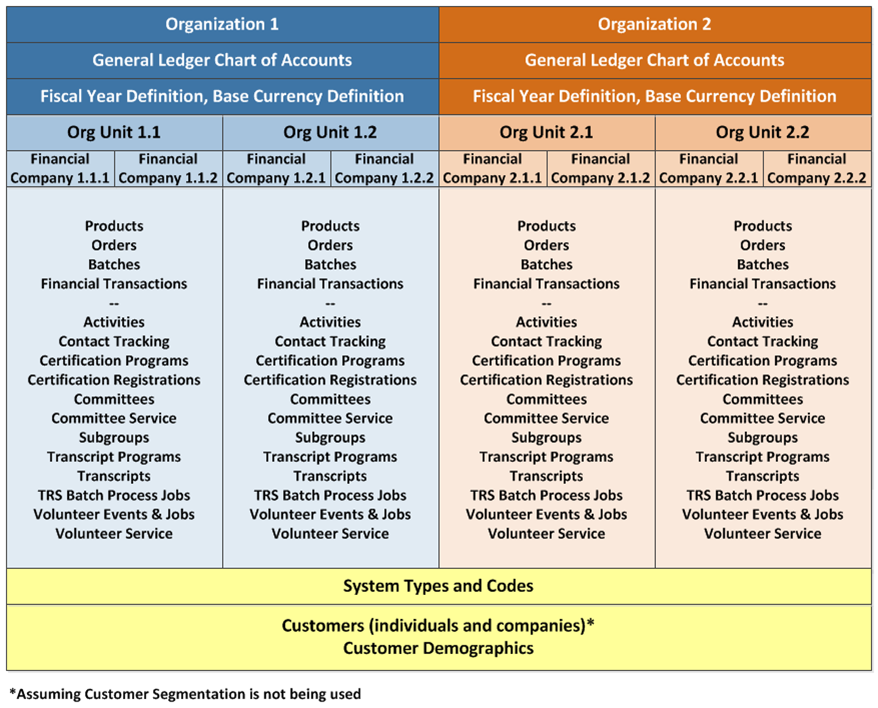 For
more information on the GL structure, please see Defining
the Organization and GL Structure.
For
more information on the GL structure, please see Defining
the Organization and GL Structure.The overall design and architecture of Personify360 supports a variety of organizational and financial structures. The most common requirement is the capability to manage multi-company accounting. However, some organizations require more segregation between entities. The level of separation an organization wants to assign to its staff, products, orders, and transactions influences the decision to implement a multiple-organization structure, a multiple organization-unit structure, or multi-company accounting.
 For
more information on the GL structure, please see Defining
the Organization and GL Structure.
For
more information on the GL structure, please see Defining
the Organization and GL Structure.
Refer to the following table for the definitions of organizations, organization units, and financial companies.
Term |
Definition |
|---|---|
Organization |
This is the top structural entity in Personify360. The organization owns the master General Ledger (GL) chart of accounts. When you log into Personify360, you log into an organization and an organization unit within the organization. An organization must always be paired with at least one organization unit. |
Organization Unit |
This entity is within the organization that owns all products and orders. At least one organization unit must exist for each organization. Staff members and financial companies are assigned to organization units. A staff member can have a login to more than one organization unit.
Organization Units share the GL and chart accounts within the organization. The GL account is shared across organization units to allow intercompany transactions to share revenue across organization units. Each organization unit can create its own financial statements and make a consolidated statement. |
Financial Company |
This refers to a financial company that uses one chart of accounts. Each financial company has its own balance sheet and its own bank account(s). If more than one financial company is defined, intercompany accounts should be defined to support due-to/due-from transactions. |
The following graphic illustrates a sample Personify360 organizational hierarchy.

In this section:
o Defining Basic Organization Setup
o Defining GL Account Segment Structure
o Defining Financial Companies within the Organization Unit
· Granting Security Access to Create GL Accounts